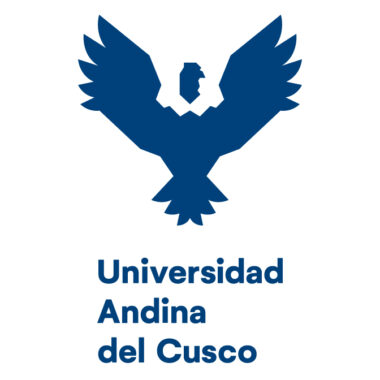Structural barriers to access to comprehensive sexuality education from the health care of Yoreme-Mayo agricultural day laborers
DOI:
https://doi.org/10.36881/yachay.v12i1.671Keywords:
structural barriers, social determinants of health, sexual health, sex education, indigenous womenAbstract
Structural barriers are an important gap for access to comprehensive sex education, which is amalgamated with socio-labor conditions and socioeconomic barriers, which prevent timely attention to sexual health care, as is the case for women agricultural workers in Northern Sinaloa, for years they have remained violated under a structural system of oppression, symbolic violence, invisibility and discrimination, not having a social protection, nor security scheme. This research aims to analyze the main barriers that hinder the right to comprehensive sex education from the health care in Yoreme-Mayo agricultural day laborers. The work is developed from an interpretative study with a qualitative approach, the choice of methodological tools has feminist epistemological bases. Information was collected through semi-structured interviews and audio recordings where six women were given voice. As results, three categories of analysis emerged: structural, economic and time barriers, the findings indicate that these barriers intersect with socio-labor conditions and labor informality, on the other hand, an axis that crosses these barriers was time, limiting the possibilities of having essential information for sexual and reproductive health, as well as the prevention of Transmission Infections. Women day laborers face a structural disadvantage where social, economic, political and cultural processes modify ways of life for timely sexual health care, which are drawn immediately due to multiple factors including geographical spaces of settlement, customs, time restriction, excess domestic and extra-domestic burden, linked to a significant lag at the educational level in indigenous populations. Based on the results we suggest to continue developing prevention policies in health, safety and social protection coverage for women agricultural workers.
Downloads
References
Arruda, A. (2012). Teoría de las Representaciones Sociales y Teorías de Género. En Blazquez, N., Flores, F., y Ríos, M (Eds.), Investigación Feminista: epistemología, metodología y representaciones sociales (1er ed., 317-337). Colección Debate y Reflexión. https://www.puees.unam.mx/curso2021/materiales/Sesion7/Blazquez2012_InvestigacionFeminista.pdf
Barbieri, T. (1993). Sobre la categoría género. Una introducción Teórico- Metodológica. Debates de la Sociología, (18), 145-169. https://revistas.pucp.edu.pe/index.php/debatesensociologia/article/view/6680
Barrón, A. (diciembre de 2019). Presentación: Es momento de hablar de los jornaleros agrícolas. La Jornada del Campo (147). https://www.jornada.com.mx/2019/12/21/delcampo/articulos/momento-de-hablar.html
Becker, G. (1965). A theory of allocation of time. The Economic Journal, (75), 493-517. https://doi.org/10.2307/2228949
Burchardt, T. (2008). Time and income poverty. Centre for Analysis of Social Exclusion-London School of Economics. https://www.jstor.org/stable/pdf/2228949.pdf
Calvario, P., & Arellano, G. (2022). Las personas jornaleras y la COVID-19: prevención y condiciones laborales en Sonora, México. Población y Salud en Mesoamérica, (20), 1-21. https://doi.org/10.15517/psm.v20i1.48645
Canabal, B. (julio de 2017). Mujeres Jornaleras. La jornada del campo (118). https://www.jornada.com.mx/2017/07/16/cam-mujeres.html
Creswell, J. (1994). Qualitative Inquiry and Research Design. Recuperado de https://academia.utp.edu.co/seminario-investigacion-II/files/2017/08/INVESTIGACION-CUALITATIVACreswell.pdf
Damián, A. (2013). El tiempo, la variable olvidada en los estudios del bienestar y la pobreza. Revista Sociedad y Equidad, (5) 1-28. https://doi.org/10.5354/rse.v0i5.26326
Dias do Nascimento, J., Meireles, G., Ribeiro, L., Braga, C., Catafesta, U., & Bernardino, E. (2016). Uso del software NVivo en una investigación con Teoría Fundamentada. Index de Enfermería, 25(4), 263-267. http://scielo.isciii.es/scielo.php?script=sci_arttext&pid=S1132-12962016000300009&lng=es&tlng=es.
Encuesta Nacional de Ocupación y Empleo (ENOE, 2022). Encuesta Nacional de Ocupación y Empleo en población de 15 años y más edad. https://www.inegi.org.mx/programas/enoe/15ymas/
Flores, F. (2014). Vulnerabilidad y representación social de género en mujeres de una comunidad migrante. Península, (9), 41-58. http://www.scielo.org.mx/scielo.php?script=sci_arttext&pid=S1870-57662014000200002
Guerra, E., Valdez, M., Meza., & Caro, M. (2019). Comunidades Interculturales en la Etnoregión Yoreme- Mayo de Sinaloa. En Castellanos, A., Guerra, E. & Real, José (Ed.), De la Etnoregión al territorio educativo. Desafíos universitarios (pp. 109-144). Moby Dick.
Harding, S. (2012). ¿Una filosofía de la ciencia socialmente relevante? Argumento en torno a la controversia sobre el punto de vista feminista. En Blazquez, N., Flores, P. & Ríos, M (Eds.), Investigación Feminista Epistemología Metodología y Representaciones Sociales. (pp. 39-65). Colección Debate y Reflexión. https://www.puees.unam.mx/curso2021/materiales/Sesion7/Blazquez2012_InvestigacionFeminista
Hernández, S. (2018). Metodología de la investigación. 6.ª ed. McGraw-Hill
Híjar, M. M. (2019). Violencia, Salud y Mujeres. Mujer, Derechos Humanos y Salud. Gaceta Conbioética. (33), 1-47. https://www.gob.mx/cms/uploads/attachment/file/546478/Gaceta_33_-_Mujer_derechos_humanos_y_salud.pdf
Ibáñez, T. (1994). Representaciones sociales teoría y método. En: T. Ibáñez, Psicología Social Construccionista. Universidad de Guadalajara.
Instituto Nacional de Estadística y Geografía (INEGI, 2021). Censo de Población y Vivienda 2020. https://www.inegi.org.mx/app/cpv/2020/resultadosrapidos/default.html?texto=LA%20PALMA,%20EL%20FUERTE
Juárez, R., Villalobos, A., Sauceda, A., y Nigenda, G. (2020). Barreras en mujeres indígenas para acceder a servicios obstétricos en el marco de redes integradas de servicios de salud. Gaceta Sanitaria, (34), 546-552. https://dx.doi.org/10.1016/j.gaceta.2019.05.015
Lavielle, B. (2014). Derecho a la salud: disponibilidad de infraestructura sanitaria. Centro de Análisis e Investigación. https://www.fundar.org.mx/mexico/pdf/dsalud.pdf
Maslow, A. (1987). Motivation and Personality. Longman.
Moscovici, S. (1986). Pensamiento y vida social Psicología social y problemas sociales. Psicología social II. Paidós.
Organización Panamericana de la Salud (2018). Cáncer Cervicouterino. https://www.paho.org/hq/index.php?option=com_content&view=article&id=5420:2018-cervical-cancer&Itemid=3637&lang=es
Organización Panamericana de la Salud (OPS, 2022). Vitrina del conocimiento sobre la dimensión comercial de los determinantes de sociales de la salud. https://www.paho.org/es/noticias/4-1-2022-inaugurada-vitrina-conocimiento-sobre-dimension-comercial-determinantes-sociales
Ortiz, C. (2019). Saliendo y pagando: destajo y flexibilidad salarial en la agricultura de exportación. Jornada del Campo, (8). https://www.jornada.com.mx/2019/12/21/delcampo/articulos/saliendo-y-pagando.html
Palacios, F. (2012). El enfoque cualitativo en las representaciones sociales de género. Investigación feminista, epistemología metodología y representaciones sociales. CLACSO.http://biblioteca.clacso.edu.ar/Mexico/ceiich-unam/20170428032751/pdf_1307.pdf
Pelcastre, B., Meneses, S., Sanchez, M., Melendez, D., y Freyermuth, G. (2020). Condiciones de salud y uso de servicios en pueblos indígenas de México. Salud Publica de México, (62), 1-10. https://doi.org/10.21149/11861
Riegraf, B. & Aulenbacher, B. (2010). Investigación feminista - ¿quo vadis? Recuento metodológico histórico y perspectiva epistemológica a futuro. En Garza, E & Leyva, G. Eds. Tratado de Metodología de las ciencias sociales: perspectivas actuales. (pp. 534-553). Fondo de Cultura Económica. https://imaginariosyrepresentaciones.files.wordpress.com/2015/05/tratado-de-metodologia-de-las-ciencias-sociales-de-la-garza-toledo.pdf
Secretaría de Trabajo y Prevención Social (STPS, 2021). Compromisos laborales derivados de tratados comerciales internacionales. Gobierno de México. https://www.gob.mx/stps/acciones-y-programas/compromisos-laborales-derivados-de-tratados-comerciales-internacionales
Sosa-Sánchez, I. & Menkes, B. C. (2014). “Como te ven te tratan”. Desigualdades sociales en servicios públicos de salud reproductiva en México. En L.L. Rodríguez y J.A. Sánchez. (Ed,) La población afrodescendiente e indígena en América Latina. (pp.161-255). ALAP. https://www.researchgate.net/publication/308893033_Como_te_ven_te_tratan_Desigualdades_sociales_en_los_servicios_publicos_de_salud_reproductiva_Resultados_de_un_estudio_de_caso_en_el_centro_de_Mexico
Valenciano, J., Capobianco, U., y Toril, J. (2022). Vulnerabilidad laboral de la mujer rural latinoamericana. Nóesis. Revista de Ciencias Sociales, 26(52), 130-151. https://doi.org/10.20983/noesis.2017.2.6
Downloads
Published
How to Cite
Issue
Section
License
Copyright (c) 2023 Ginne Ussi Guadalupe Apodaca-Orozco, José Eduardo Calvario-Parra, Gustavo Alfredo Gómez-Rodríguez

This work is licensed under a Creative Commons Attribution 4.0 International License.
You are free to:
- Share — copy and redistribute the material in any medium or format
- Adapt — remix, transform, and build upon the material
- The licensor cannot revoke these freedoms as long as you follow the license terms.
Under the following terms:
-
Attribution — You must give appropriate credit, provide a link to the license, and indicate if changes were made. You may do so in any reasonable manner, but not in any way that suggests the licensor endorses you or your use.















